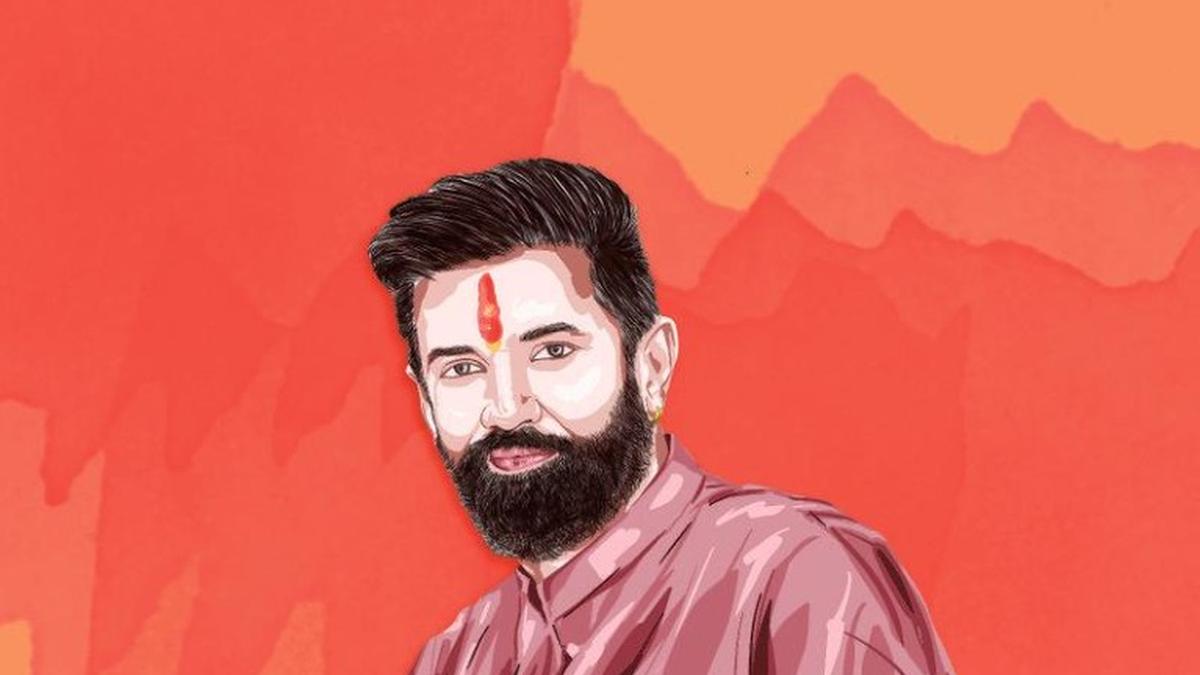Chirag Paswan, a prominent political figure in Bihar, India, has undergone a remarkable transformation both in appearance and political stature over recent years. Once known for his flamboyant style—marked by blonde-streaked hair, a bulked-up physique, and colorful suits—he now presents a carefully crafted image that reflects his evolving role in politics. Sporting neatly styled dark hair, an immaculately trimmed beard, a traditional vermillion mark on his forehead, and wearing a white kurta paired with blue jeans, his new look symbolizes a deeper connection with his cultural roots and his political ambitions.
Chirag’s journey into politics is deeply intertwined with his family legacy. His father, Ram Vilas Paswan, was a revered Dalit leader and the founder of the Lok Janshakti Party (LJP), a key player in Bihar’s political landscape since 2000. However, the party’s fortunes have waxed and waned over the years. After Ram Vilas Paswan’s death, Chirag inherited the leadership of the LJP, but his tenure has not been without challenges. The party suffered a significant setback when Chirag’s uncle, Pashupati Nath Paras, defected in 2021, taking four Lok Sabha MPs with him and splintering the party. Despite these adversities, Chirag has worked to rebuild the LJP’s presence, positioning himself as a Cabinet minister and a key figure in Bihar politics.
Interestingly, Chirag’s initial foray into public life was not in politics but in Bollywood. He had a brief stint as a film actor but his debut film did not succeed, prompting him to exit the industry. He humorously acknowledges this chapter of his life by saying, “I know a bad film; I have acted in one after all.” However, while his cinematic career did not take off, his political career has gained momentum, particularly in the run-up to the 2025 Bihar Assembly elections.
One of Chirag Paswan’s significant political achievements has been securing a substantial share of seats for the LJP within the National Democratic Alliance (NDA) coalition in Bihar. For the upcoming elections, the LJP has been allotted 29 seats to contest—a notable increase compared to previous elections and at least nine more than what the Janata Dal (United) or JD(U), led by Chief Minister Nitish Kumar, was willing to concede. Chirag has also claimed that he was able to choose around 80% of these seats, a sign of his growing influence within the alliance. This generous seat-sharing arrangement has not gone unnoticed and has caused discontent among other NDA partners such as the Hindustan Awam Morcha and the Rashtriya Lok Samata Party, whose leaders have expressed dissatisfaction with the number of seats allocated to the LJP.
The history of the LJP reflects a fluctuating political journey. The party’s highest point was in the February 2005 Bihar Assembly elections, where it won 29 seats in a hung assembly. However, in recent years, the party’s vote share has plummeted to around 5%, and neither faction of the now-splintered LJP has any legislators in the current assembly. This context makes the current seat allotment all the more significant, indicating Chirag Paswan’s efforts to rejuvenate the party’s standing ahead of the elections.
Chirag initially intended to contest from the Shahabad region, an area where the NDA traditionally underperforms. However, the party leadership advised against it, suggesting that with more seats at their disposal, Chirag might have reconsidered. This decision was welcomed by the NDA, given the existing uncertainties surrounding Nitish Kumar’s continuation as Chief Minister if the alliance wins. Chirag’s participation in the Assembly polls might have added to the political ambiguity, so his decision not to contest at this time is seen as a strategic move.
This election cycle marks a notable development: the LJP is contesting alongside Nitish Kumar’s JD(U) and actively campaigning for votes in support of him. This is a shift from past hostilities, as the Paswan family has been openly critical of Nitish Kumar’s administration. The core voter base of the LJP largely comprises Paswans, a significant Dalit sub-caste group. In 2007, Nitish Kumar created the Mahadalit category to provide targeted government assistance to marginalized Dalit sub-castes but notably excluded the Paswan community. This exclusion has previously

